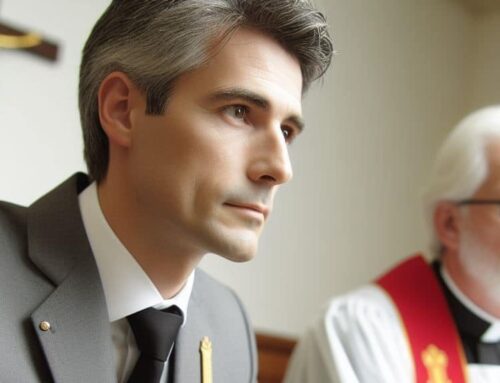What is forgiveness?
Forgiveness is my choice to let go of my right to hurt you for hurting me. Forgiveness stops and looks carefully at the wrong done, allows the
emotions that the wrong elicited to have expression (tears, anger, etc.) and then seeks restitution through some process of justice.
Forgiveness does not give tacit approval to the wrong done and does not mean a denial of the right of justice. However legal justice does not balance the scale because great injustice is not just a legal matter, it is an emotional experience and forgiveness is needed to set you free from the pain, resentment, bitterness, anger, etc.
Free to again experience happiness.
How do we get to the place of forgiveness, of healing?
1. We must want to forgive. We need to pray for a heart that is willing to and desires to forgive.
2. Focus on growing empathy and letting go of judgmentalism.
(Give the benefit of the doubt. Assume the other has valid reason from their perspective for behaving the way they are, that they are struggling for survival in some way.)
3. Seek God’s transformation to have a humble heart.
(Acknowledge my sin put Jesus on the cross. I am a sinner just as is the person who hurt me. I am not better than them.)
4. Know Grace is Received NOT Achieved.
(Recognize we do nothing to earn or deserve God’s forgiveness. We receive His amazing gift of forgiveness and allow it to soften our hearts to grace others.)
“But God demonstrates His own love for us in this: while we were still sinners, Christ died for us.” Romans 5:8
Freely you have received, freely give Matt. 10:8
1. Write a letter: to the person who hurt you. This letter will never be read by them or anyone else. The purpose of the letter is to give voice to the hurt. Express yourself freely in whatever language you need. God is the only other one to see the letter and He already knows what you are thinking and feeling so it will not be news to Him. Allow yourself to cry, to rage, to give expression to the emotional intensity. When you have given voice to the emotions, pray asking God for a willingness to forgive this person. When you are ready, tear up the letter and burn it. As you watch the smoke go up imagine all the hurt and injustice leaving your heart and mind and going up to God, trusting Him for healing and ultimate justice making. As you watch the paper transform to ashes, ask God to transform your heart bringing healing, becoming soft.
2. Grow empathy: This will take lots of practice. Put yourself in the other person’s skin, to see the world through their eyes, to think about the situation with their thoughts, to feel with their feelings. If you find yourself thinking about what you think the ‘reality’ is, then you have swopped over to your thoughts and feelings. Get outside of yourself and put yourself in their skin. God designed us to be empathetic. We have mirror neurons that enable us to feel what others feel. Fear inhibits the mirror neurons from functioning the way God designed. Fear of injustice, fear being hurt again, fear … Let go of fears and allow yourself to have empathy. Remind yourself that you also have hurt others.
3. Confront the Person: When an attachment injury happens in an intimate relationship, have a conversation with them with the intent of healing and renewing the relationship.
- The hurt partner speaks as openly and simply as possible, resisting making a case against your partner, staying focused on describing the pain and how it affects your sense of safety with your partner.
- The injuring partner stays emotionally present and acknowledges the wounded partner’s pain and his or her part in it. The pain needs to be recognized or they will not be able to let it go.
- Injuring partners now take ownership of how they inflicted this injury on their lover and express regret and remorse. This cannot be done in a cool or dismissive tone. Have empathy and express regret sincerely.
- The injured partner shares ‘What am I most afraid of?’ Then, ‘What do I need most from you right now?’ (To bring closure to the trauma). Ask directly for these needs to be met, that is, for the injuring partner to respond differently than they did in the incident.
- The couple now creates a new story that captures the injuring event, how it happened, eroded trust and connection. Most important, the story describes how they together
confronted the trauma and began to heal it. Now as a team they can discuss how to help each other learn from and continue to heal this injury and prevent further injuries. Continuing to heal might involve setting out rituals that reassure the hurt partner. (Created for Connection; Dr. S. Johnson & K. Sanderfer; pp. 189-195)








